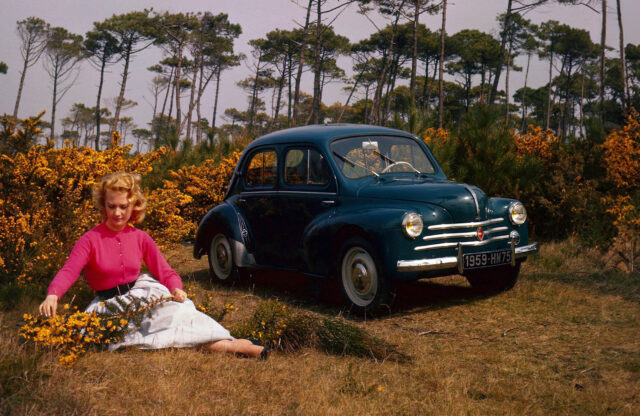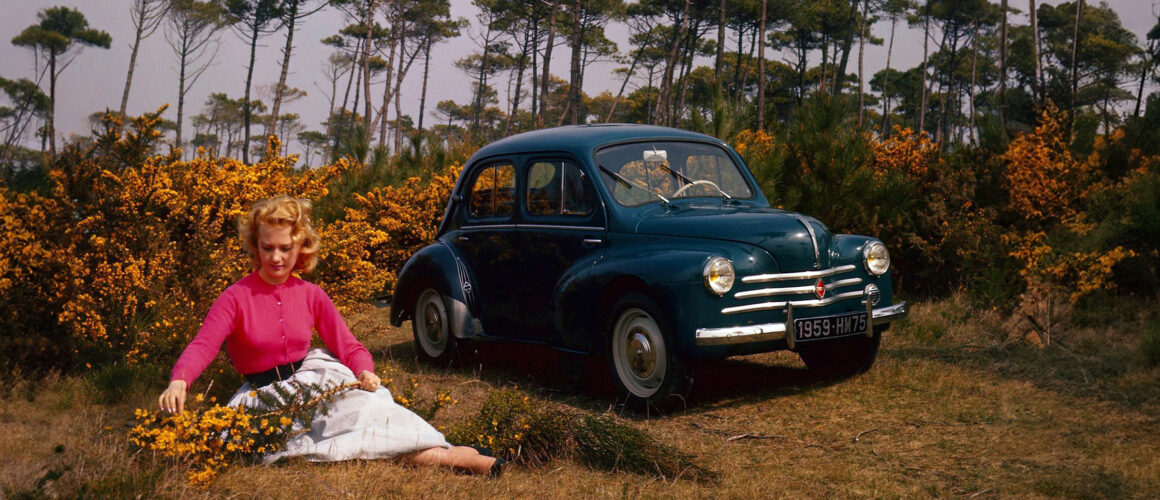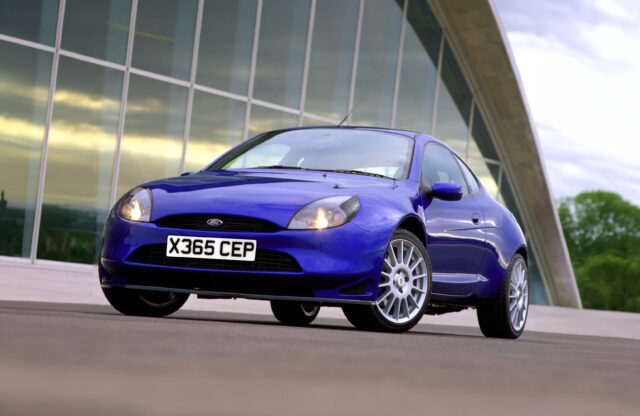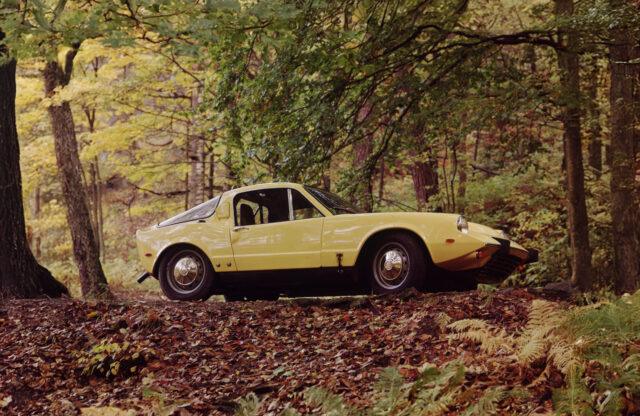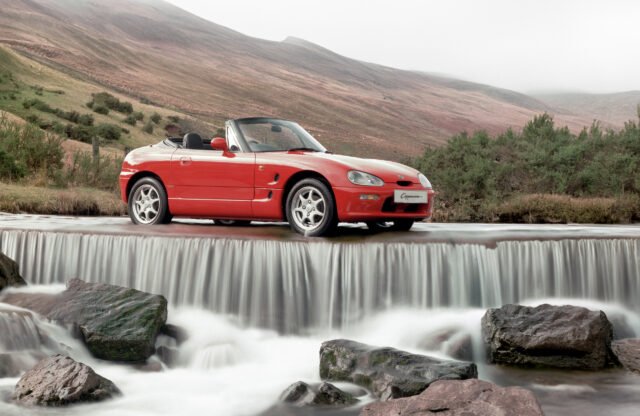Mille Miglia winners come in all shapes and sizes. While the big-power monsters tend to revel in the glory, humble machinery doing extraordinary things in the lower classes often gets forgotten. In the hands of Jean Rédélé (founder of Alpine), not only did the Renault 4CV compete in several Mille Miglias, it actually won its class in 1952, and came close to a class win at Le Mans that same year.
As the first new road-going Renault launched after World War Two, the 4CV was intended to offer cheap, cheerful motoring for the masses. Launched in 1947, it beat Citroën’s 2CV to market by a year – and, much like its rival, had largely been developed in secret during German occupation. It was the first of many Renaults with a rear-mounted engine and featured monocoque construction. Although the earlier prototypes all had two doors, the production car was launched with four, those at the front rear-hinged.
At launch there was an all-new water-cooled 760cc engine, with three-speed manual gearbox. From 1950 a slightly smaller 747cc version enabled the 4CV to compete in various forms of motorsport. Although only producing 17bhp (21bhp in the Grand Luxe model), it was a flexible engine that made for easy driving in town and 50mph open-road cruising. Thanks to the rear-mounted drivetrain it was a pretty good rally car out of the box, too, and that inspired Rédélé to create his own honed Alpine versions.
As a road car the 4CV was practical, reliable and capable of enduring the rough post-war roads. Although it was great in the hands of racing drivers, some found early cars to be difficult to control when their modest limits were reached. This was tamed by a slower steering rack; aside from minor production alterations and tweaks to the interior, however, the car remained substantially unchanged throughout production. It continued to be built even when the bigger, plusher Dauphine arrived in 1956, though stripped back and sold at a lower price. In 1961, towards the end of production, Ghia built a run of 50 4CV-based Beach Wagons, much like the Fiat 500 Jolly. These, along with original competition cars, are the most valuable. The introduction of the Renault 4 in 1961 saw 4CV production finally cease.
The 4CV found success in various countries around the world. Spain was a big market, as was West Germany. Japan built its own Hino-badged 4CV under licence until 1961, and right-hand-drive models were built in the UK using parts shipped in from France. All this meant that the 4CV was the first French car to surpass one million units worldwide. Thanks to its racing heritage and the closely related Dauphine, there are plenty of upgrades available. 850cc Gordini-spec engines fit with a few modifications, while servo-assistance or a front disc conversion boost braking to match.
Whether you want a classic runabout to pootle around in, or a Mille Miglia-eligible racer, Renault’s often overlooked 4CV stands out from the relative hordes of Citroën 2CVs and VW Beetles. Polish up your French, search rural France for a solid car, and enjoy the trip home.
Renault 4CV Common problems
• Rust can kill a 4CV, as restoration cost quickly outstrips value. Check the chassis rails closely, and make sure shiny paint isn’t hiding nastiness.
• Engines and gearboxes are tough; most will have been rebuilt by now. Check for corresponding chassis and braking tweaks on any car with power upgrades. Parts availability and knowledge is good through the various international clubs.
What to pay?
A well-restored 4CV should command around £10,000-15,000 and subtly upgraded cars also fall within this price range. Expect to find something a little more rough- and-ready in France from about £7000; solid projects can be had for under £5000.
The desirable Grand Luxe version could be up to £20k, while something prepared for competition use could cost between £20,000 and £30,000; anything with proper competition history will be considerably more. Rare right-hand-drive examples carry a premium in the UK.
